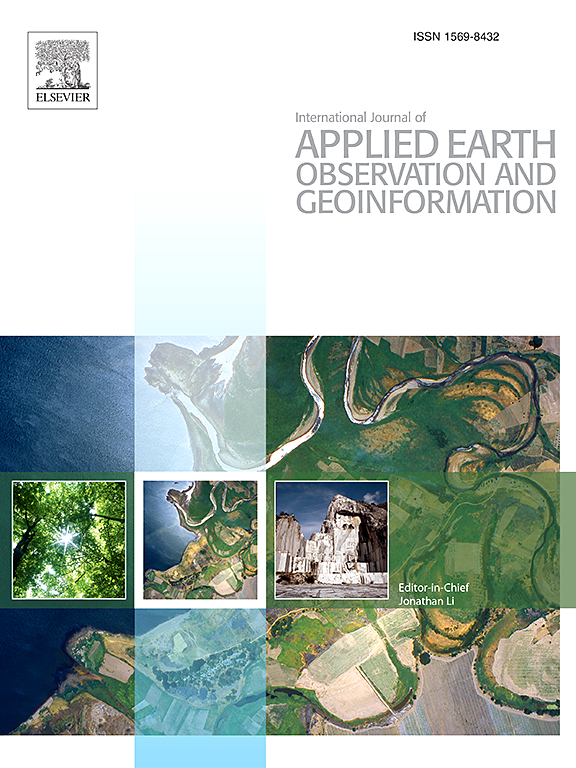FAIR principles in workflows: A GIScience workflow management system for reproducible and replicable studies
IF 7.6
Q1 REMOTE SENSING
International journal of applied earth observation and geoinformation : ITC journal
Pub Date : 2025-03-14
DOI:10.1016/j.jag.2025.104477
引用次数: 0
Abstract
Scientific workflow management systems (WfMS) provide a systematic way to streamline necessary processes in scientific research. The demand for FAIR (Findable, Accessible, Interoperable, and Reusable) workflows is increasing in the scientific community, particularly in GIScience, where data is not just an output but an integral part of iterative advanced processes. Traditional WfMS often lack the capability to ensure geospatial data and process transparency, leading to challenges in reproducibility and replicability of research findings. This paper proposes the conceptualization and development of FAIR-oriented GIScience WfMS, aiming to incorporate the FAIR principles into the entire lifecycle of geospatial data processing and analysis. To enhance the findability and accessibility of workflows, the WfMS utilizes Harvard Dataverse to share all workflow-related digital resources, organized into workflow datasets, nodes, and case studies. Each resource is assigned a unique DOI (Digital Object Identifier), ensuring easy access and discovery. More importantly, the WfMS complies with the Common Workflow Language (CWL) standard to guarantee interoperability and reproducibility of workflows. It also enables the integration of diverse tools and software, supporting complex analyses that require multiple processing steps. This paper demonstrates the prototype of the GIScience WfMS and illustrates two geospatial science case studies, reflecting its flexibility in selecting appropriate techniques for various datasets and research goals. The user-friendly workflow designer makes it accessible to users with different levels of technical expertise, promoting reusable, reproducible, and replicable GIScience studies.
求助全文
约1分钟内获得全文
求助全文
来源期刊

International journal of applied earth observation and geoinformation : ITC journal
Global and Planetary Change, Management, Monitoring, Policy and Law, Earth-Surface Processes, Computers in Earth Sciences
CiteScore
12.00
自引率
0.00%
发文量
0
审稿时长
77 days
期刊介绍:
The International Journal of Applied Earth Observation and Geoinformation publishes original papers that utilize earth observation data for natural resource and environmental inventory and management. These data primarily originate from remote sensing platforms, including satellites and aircraft, supplemented by surface and subsurface measurements. Addressing natural resources such as forests, agricultural land, soils, and water, as well as environmental concerns like biodiversity, land degradation, and hazards, the journal explores conceptual and data-driven approaches. It covers geoinformation themes like capturing, databasing, visualization, interpretation, data quality, and spatial uncertainty.
 求助内容:
求助内容: 应助结果提醒方式:
应助结果提醒方式:


